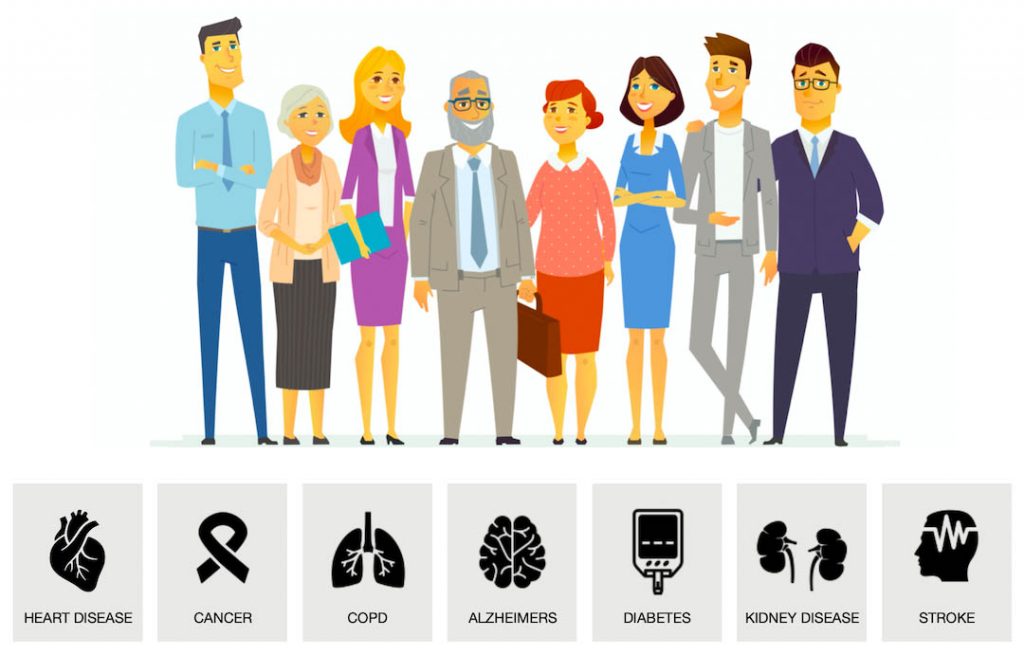Many adults are taking care of themselves, living longer, and aging in place. In fact, many people are living longer than the past few decades ago. According to research statistics, “in the 1960s, the age of life expectancy was 53 while today, Americans are living to be between 79 and 83.” They’re exercising, eating better, enjoying leisure time, bonding with family, utilizing stress relievers, and taking the advice of their doctor.
In fact, more adults are taking vitamins and supplements to live a healthier lifestyle. However, on average, “66% of adult Americans use prescription drugs.” Keep reading more details to discover how age increases the risk of prescription drug side effects.
Contents
Are More Older Adults Taking Prescription Medication?
A Georgetown study shows, ” more older adults are utilizing prescription medication because of increased chronic illnesses as they age.” Older adults were spending $73 billion on prescription drugs over two decades ago, but these healthcare expenditures have increased by nearly 26%.
Although, adults are living longer, they’re still suffering from many chronic conditions. With age, brings an increase in chronic conditions and the risk of increased side effects from prescription medication. Prescription drugs are being used to improve or maintain the health of these older adults that are suffering from chronic conditions.
type of Chronic Conditions Older Adults
There are one in five common chronic conditions that most older adults take prescription drugs for including:
- heart disease
- hypertension
- diabetes
- arthritis
- cancer
Diabetes is the leading cause for prescription drugs among older adults. They spend four times as much each year on diabetic prescription medication.
Cancer is the second leading cause of older adults being prescribed and taking prescription medication. Often times, cancer treatment leads to pain and other issues that require the need for prescription medicine.
What Increases Prescription Drug Side Effects For Older Adults
Many studies performed to determine the side effects of prescription drugs are performed on young healthy participants. As aging takes place, “the body processes prescription drugs differently.” Thus, the benefits and side effects of prescription medication is inherently different for older adults.
The damaging side effects of prescription drugs can be significantly reduced with sufficient studies on older adults and older adults with chronic conditions. This type of research can be expensive and take several years before an actual analysis is realized. In the meantime, older adults are dealing with the increased risk of prescription drug side effects that can have a significant health impact.
Body Changes In Older Adults
As the body changes, the way prescription medicine is processed, absorbed, and exits the body changes. For example, the body’s breakdown mechanism changes with age which causes prescription medicine to stay in the body longer. Many older adults may need a lower dose which can decrease the impact of prescription drug side effects for older adults.
If you’re suffering from the side effects of prescription drugs as a result of body absorption, you should talk to your doctor right away. Finding out how your body processes and gets rid of prescription medication can help you greatly reduce the side effects.
Multiple Chronic Conditions
Many older adults suffer from multiple ailments which means they take more than one prescription medication. The average older adult takes more than five prescription medicines while older adults in nursing home facilities take at least seven or more. Suffering from multiple conditions leads to a higher intake of prescription drugs. Older adults can experience a worsening condition for one chronic illness from the prescribed medication of another chronic illness and this also increases the side effects of prescription medication for older adults.
If the doctor isn’t aware of any side effects the patient is experiencing, it’s very likely they won’t change the medication regimen to reduce the side effects.
Drug Interaction
Aubrey Knight, MD was quoted as saying: “a medication is a poison with a desirable side effect.”
The truth is, many older adults are experiencing prescription drug effects due to drug interaction.
Over 15% of all hospitalizations are older adults involving symptoms of related or adverse prescription drug combination side effects. Physician’s describe it as the ” prescription cascade.” This is a result of the side effects of one medication to another then another, and another and the trend continues among older adults.
The risk of increased side effects becomes higher among elderly patients in nursing home facilities. Multiple prescription drug interaction is the number one cause of side effects by older adults. A combination of prescription drugs for older adults can be dangerous without the direct guidance of a doctor.
There is a cautionary guide that lists over 50 prescribed medicines that can be potentially harmful to patients over 65 years of age or older.
If you get prescription drugs from an online pharmacy, talk to side effects online pharmacy specialist for details on drug interaction on older adults.
To avoid the adverse side effects of multiple drug interaction, it’s imperative to talk to a doctor if you’re experiencing any symptoms.
Food and Beverage Intake
Prescribed medications can be impacted by the food and beverages consumed by an individual. Most medicines have dietary recommendations that can contribute to adverse prescription drug side effects.
For instance, antibiotics do not absorb well with food, beverages, or other medications with calcium, magnesium, iron, etc.
Hint: Drinking an 8-ounce glass of water with prescription medication is highly recommended.
Discuss your diet with your doctor to avoid any possible side effects with prescription drugs.
Take a look at the short video clip below to learn more about how to avoid drug interaction:
Older adults depend on prescription medicine for the symptoms of aging, pain, mental health, chronic conditions and more. While determining an initial case of a potential drug interaction can be difficult, talking to your doctor can reduce the risk of side effects.
Older adults are more at risk because of the aging process, changes in the body, food and beverage intake, and interaction which requires consistent medical advisory to avoid the risk of side effects from prescription medication.








